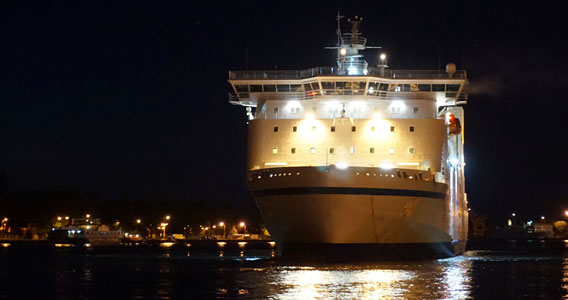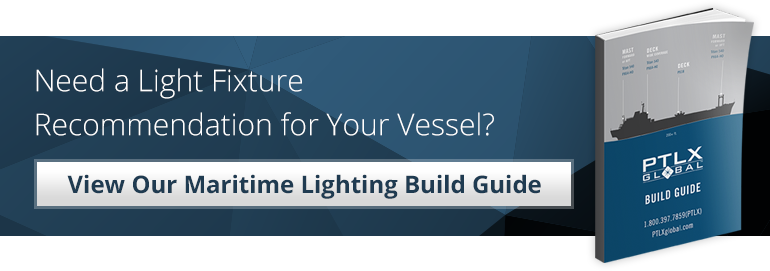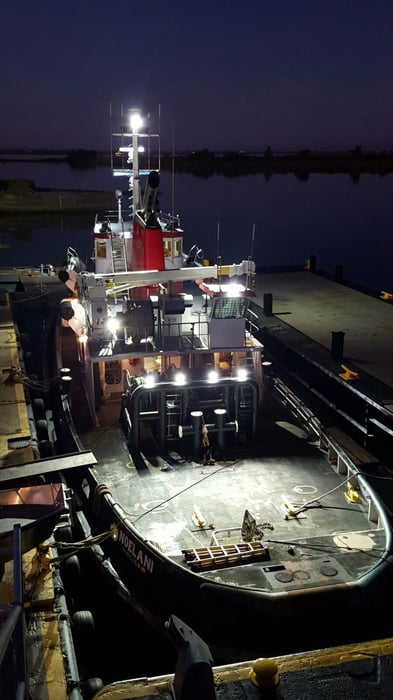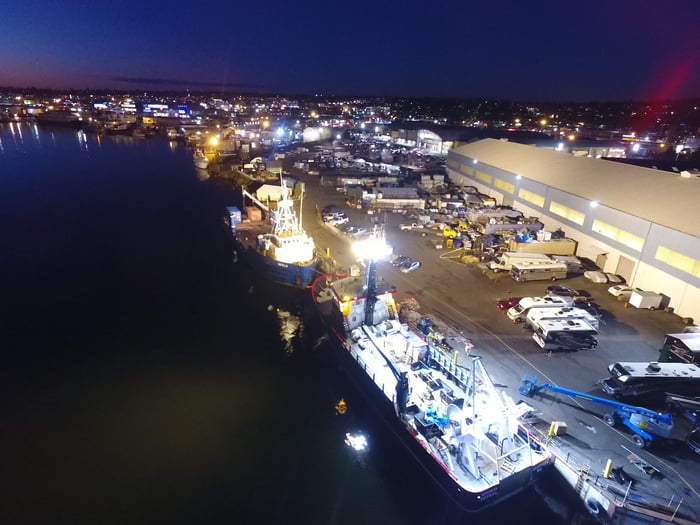
Table of Contents
 Why LED?
Why LED?
Just ask the United States Navy.
In 2012, the Department of Energy published a thorough report of their exhaustive research on LED lighting. Their efforts looked across the entire lifecycle of LED and other comparable bulbs – from manufacturing to transport to operation to disposal.
The result? LED lights did save energy over traditional lighting sources. But that’s not all. Energy savings were just the tip of the iceberg. Some of the other advantages of LED lights made them even more appealing.
For instance, LED lighting seemed perfect for maritime conditions. So much so, in fact, that the U.S. Naval Sea Systems Command embarked on a massive journey – to replace conventional bulbs with LED lighting across their fleet. Over 170 ships are now equipped with LEDs.
In 2014, the Navy issued this statement from Rear Admiral Kevin Slates, updating their progress and giving several reasons for the ongoing investments in LED.
You don’t need a whole fleet to recognize the advantages of LED, though. Other maritime captains are discovering the benefits, too.
Here are the 14 benefits of LED lighting:
- Less time in dangerous situations. LED bulbs last an average five times longer than traditional bulbs. This means your crew spends up to 80% less time up on ladders and lifts replacing them.
- Reduces your vessel’s electrical load. LED lights use approximately 50% less energy – with higher-end fixtures saving as much as 70%. Less energy used by your lighting means more energy can be utilized elsewhere on your vessel.
- More horsepower to where you need it. With less energy used by lighting, more horsepower can be directed to your pumps, motors and hydraulics. This also lessens the load on your switchboard, giving it longer life.
- Lowers operating costs. Reducing the energy needed for your vessel’s lighting by 50% – or even 70% with higher end solutions – lowers your costs to generate that energy, too. Your generators will last longer and you’ll need less fuel to create the energy you need.
- Reduces maintenance costs by up to 80%. LED lights are more durable and less prone to failures due to vibration, temperature, and impact – perfect for maritime vessels. LED bulbs are shatterproof and can withstand impacts that traditional bulbs won’t – like errant gulls. Their temperature resistance is well-suited to extremes of hot sun and cold water, not to mention rapid shifts in weather. And vibration is always a long-term and permeating condition on any vessel.
- Increases small target visibility by as much as 50%. This helps your crew pinpoint hazards both on and off your vessel.
- LED lights are safer to handle. Because they’re cool to the touch, you eliminate those safety concerns normally associated with working around and handling hot bulbs.
- Better identification and avoidance of hazards on your vessel’s deck. LED lights are hemispherical, rather than 360°. So they can be configured directionally, purposefully shining into the darker areas where you need them. This also provides more efficient use of light, with less spill and waste.
- Flexible illumination control. LED lighting can be configured to provide multiple beam angles per fixture. This gives you the flexibility to tailor where the light is targeted for whatever situation you’re in.
- Your crew is safer when an LED light breaks. Unlike CFL or fluorescent lighting, LED lights are completely non-toxic. There’s no exposure to hazardous chemicals when an LED light breaks. And the shatterproof material is less dangerous than falling glass, too.
- Immediate lighting when you need it. LED lights turn on immediately – no more waiting for the annoying “warm-up.” Plus no more restrike issues from switching off your forward mast lights when approaching another vessel. Traditional bulbs degrade and lose illumination with each restrike, a fact every captain hates. LED lights don’t need to restrike and don’t experience that degradation. Not only that, but the lights also come right back on when the other vessel’s passed.
- Lowers your vessel’s carbon footprint. This can help you meet environmental and emission standards. Because LEDs use much less power, there is less carbon dioxide generated as a byproduct of that power.
- Better visibility in challenging weather. LED lighting offers a variety of colors, including the traditional, yellowish HPS-type color. Many captains prefer this color for forward-facing applications, since it’s believed to penetrate through snow, fog, and spray better than white light. So you get the best of both worlds – the penetrating color of a typical high-pressure sodium light, with the energy savings and durability of LED.
- Less glare and eyestrain for your crew. The neutral white color available in LEDs minimizes issues of glare and flash back. This is perfect for deck applications and places less strain on the operators’ eyes during long night-hour shifts.
With so many obvious benefits for maritime use, it’s no wonder why the U.S. Navy decided to make the switch. And many more are following their lead, from cruise ships to freighters to private fishing vessels.
You can have those benefits on your vessel, too.
At PTLX, our engineers and friendly staff will help you every step of the way, from design to customization to installation to maintenance to disposal.
Don’t wait any longer to take advantage of LED lighting on your vessel. Find the maritime lighting solution that’s right for you.





